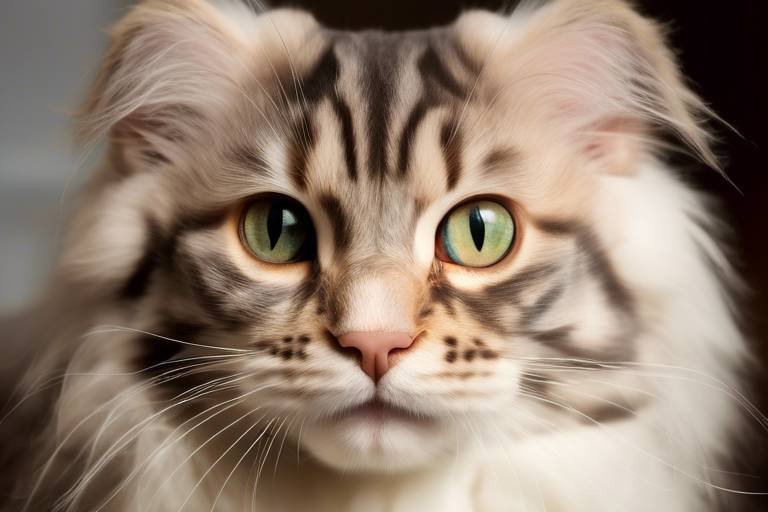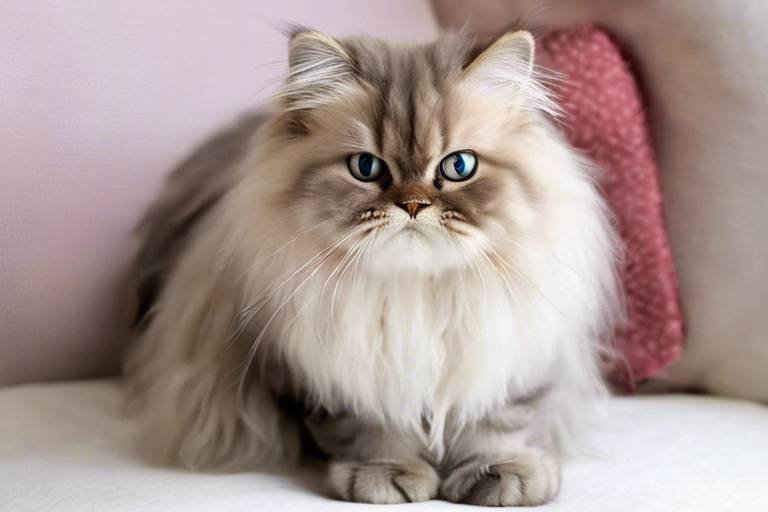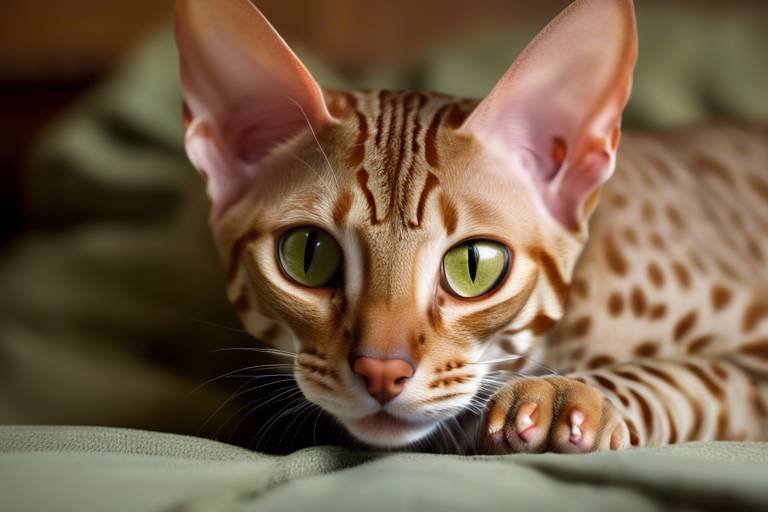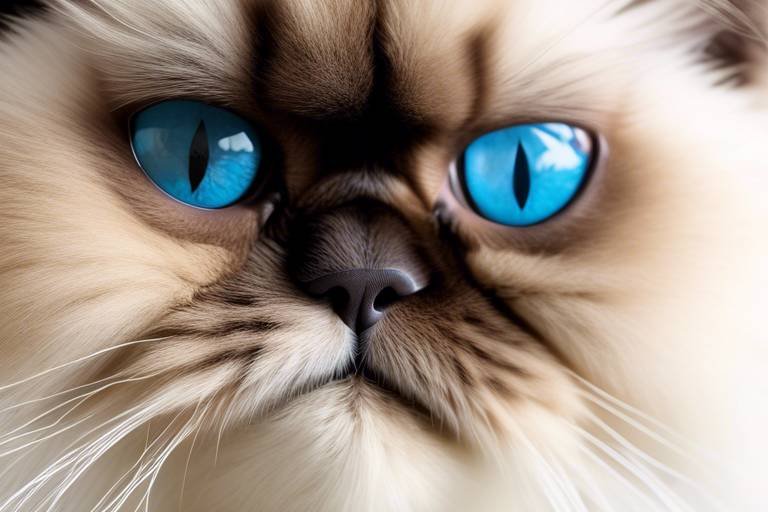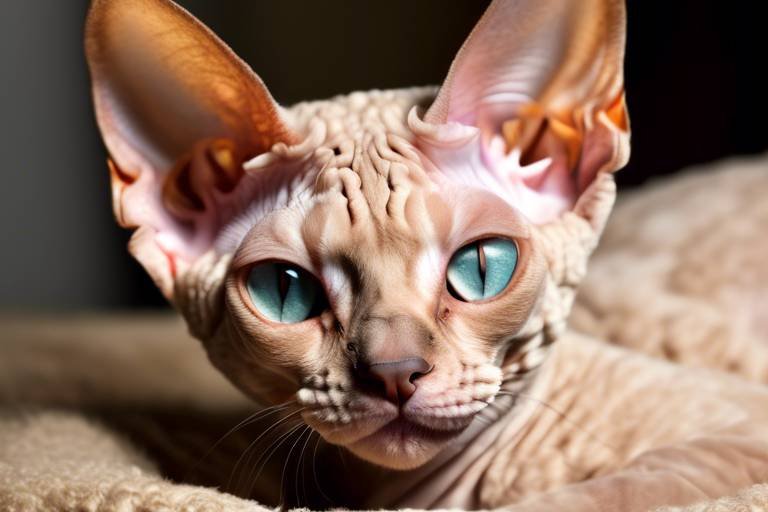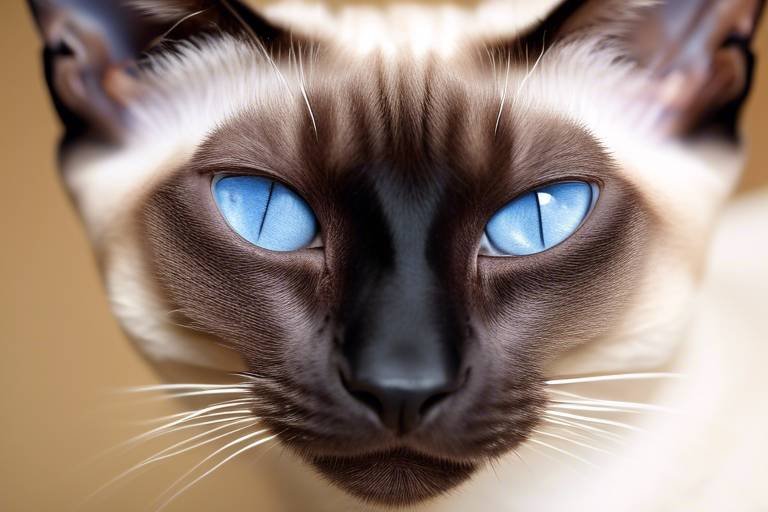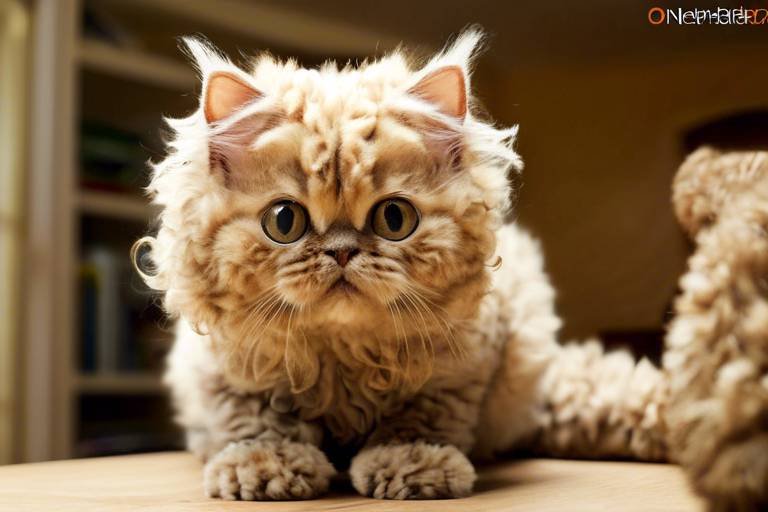The Affectionate Nature of the Bengal Cat
Bengal cats are not just another breed of domestic cats; they are a delightful blend of wild beauty and affectionate companionship. With their stunning spotted coats reminiscent of their leopard ancestors, these cats capture the hearts of many. But what truly sets Bengal cats apart is their affectionate nature. Their unique characteristics and behaviors make them more than just pets; they become cherished members of the family. In this article, we will dive deep into the affectionate behaviors of Bengal cats, exploring how they interact with their owners and other pets, and how you can create a loving environment that nurtures their affectionate spirit.
Bengal cats originated from a cross between domestic cats and the Asian leopard cat, which gives them their distinctive appearance and energetic personality. They are known for their athletic build, striking patterns, and playful demeanor. Unlike many other breeds, Bengals have a natural affinity for water and love to engage in playful antics that keep their owners entertained. Their intelligence and curiosity make them stand out, but it’s their affectionate nature that truly endears them to those lucky enough to share their lives with them.
When it comes to showing affection, Bengal cats have a plethora of charming behaviors that can melt even the coldest hearts. They are known to be very vocal, often using a range of sounds to communicate their feelings. From soft purrs to chirps and trills, their vocalizations are a clear indication of their affection. Additionally, Bengals are notorious for their playful antics, which can include everything from chasing after toys to engaging in playful wrestling with their owners. These behaviors not only foster a strong bond but also create a lively and joyful home environment.
Bengal cats thrive on human interaction. They are social creatures that crave companionship, making them ideal pets for families or individuals who can dedicate time to them. Their affectionate nature is often evident when they seek out their owners for cuddles or follow them around the house. Socialization is key in developing these affectionate traits; the more time you spend with your Bengal, the stronger your bond will become. They enjoy being part of family activities and will often want to be where the action is, whether it’s lounging on the couch during movie night or playing with the kids.
Playtime is not just a way for Bengal cats to expend energy; it’s a crucial aspect of their affectionate nature. Engaging in interactive play strengthens the bond between cats and their owners. Whether it’s using feather wands, laser pointers, or engaging in games of hide-and-seek, these playful activities encourage trust and affection. Bengals are known for their high energy levels, so incorporating play into your daily routine can lead to a happier, more affectionate cat.
Understanding how Bengal cats communicate is essential for fostering affection. Their body language and vocalizations can tell you a lot about their mood and needs. For instance, a Bengal that rubs against you is expressing affection, while a cat that kneads your lap is showing contentment. By paying attention to these cues, owners can respond appropriately, strengthening the bond of love and trust between them and their feline friends.
Bengal cats often exhibit affectionate behavior towards other pets, whether they are dogs or fellow cats. Their playful and social nature allows them to coexist harmoniously in multi-pet households. They may engage in wrestling matches with other cats or playfully chase dogs around the house. These interactions not only showcase their affectionate personality but also promote a loving and dynamic household environment.
To nurture a Bengal cat's affectionate nature, creating a loving environment is vital. This means providing a space that encourages bonding, play, and comfort. Make sure your home is filled with interactive toys, climbing structures, and cozy spots for your Bengal to relax. The more stimulating their environment, the more likely they are to express their affection. Additionally, establishing a routine that includes regular playtime and cuddle sessions can significantly enhance your relationship with your Bengal.
Engaging Bengal cats in enrichment activities fosters their affectionate behavior. Activities such as puzzle feeders, interactive toys, and even training sessions can stimulate their minds and encourage affectionate interactions. These activities not only keep them entertained but also allow you to bond over shared experiences. Remember, a happy Bengal is an affectionate Bengal!
Establishing a routine can enhance a Bengal cat's affectionate nature. Consistency in feeding, playtime, and bonding activities helps your cat feel secure and loved. When they know what to expect, they are more likely to express their affection freely. Routine creates a sense of stability that is essential for their emotional well-being, making them more open to forming deep connections with their owners.
- Are Bengal cats good with children? Yes, Bengal cats are typically very playful and affectionate, making them great companions for children.
- How can I tell if my Bengal cat is happy? Look for signs such as purring, kneading, and a relaxed body posture. Happy Bengals often seek out interaction and play.
- Do Bengal cats need a lot of attention? Yes, they thrive on human interaction and can become bored or anxious if left alone for long periods.
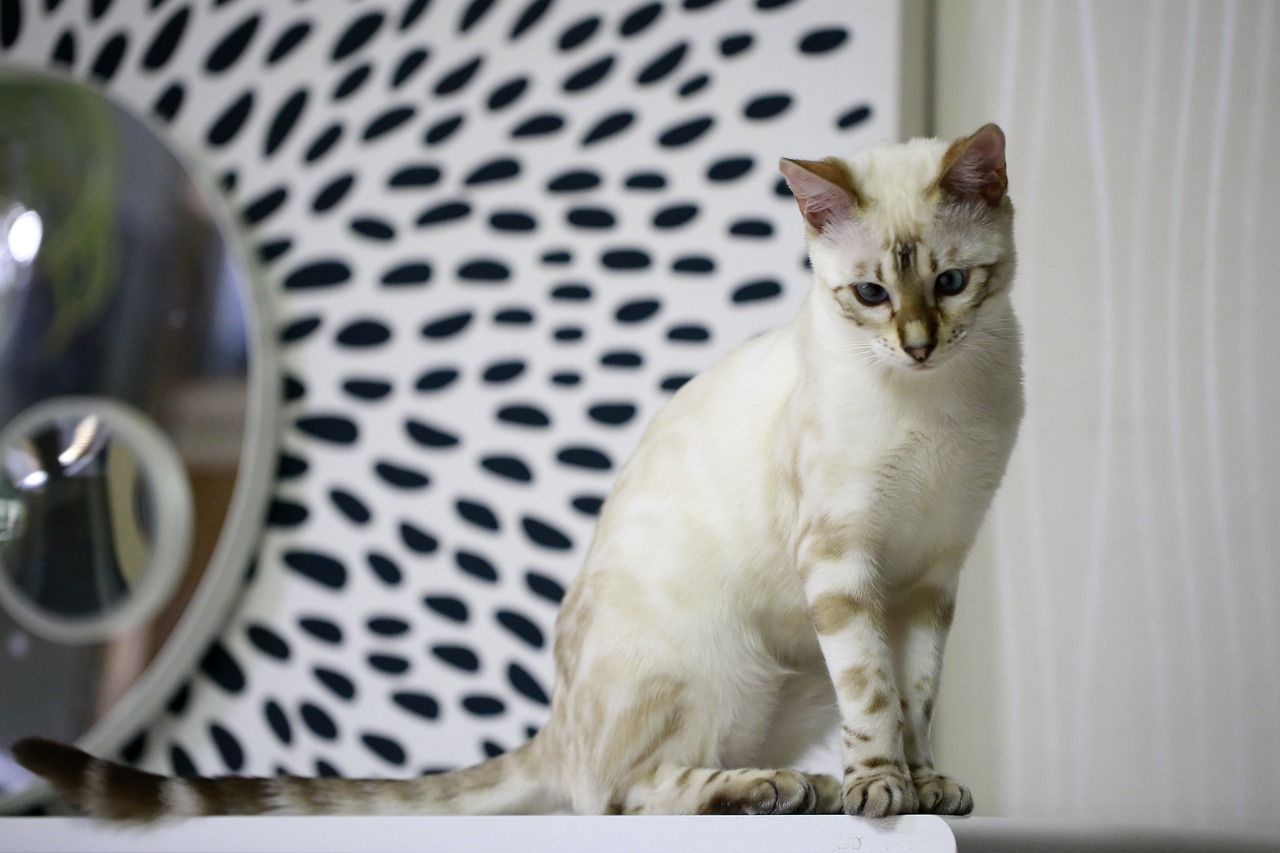
Bengal cats are not just your average feline companions; they are a captivating blend of wild beauty and domestic charm. Originating from a cross between the Asian leopard cat and domestic cats, these striking creatures boast a coat that resembles their wild ancestors, featuring a unique pattern of spots and rosettes. Their appearance is nothing short of mesmerizing, with a sleek, muscular build that exudes strength and agility. But what truly sets Bengal cats apart is not just their looks; it's their dynamic personalities that make them a favorite among cat lovers.
One of the most intriguing aspects of Bengal cats is their playful nature. They are known for their boundless energy and curiosity, often engaging in activities that keep both their minds and bodies stimulated. Unlike many other breeds that may prefer lounging around, Bengals thrive on interaction and play. This breed is highly intelligent, which means they require mental challenges to prevent boredom. Owners often find themselves in a whirlwind of activity, as their Bengal cat darts around the house, pouncing on toys or climbing to new heights. It's a joy to witness their playful antics, which not only entertain but also strengthen the bond between pet and owner.
When it comes to their behavior, Bengal cats are social butterflies. They have a strong need for companionship, whether it's with their human family members or other pets in the household. This breed is known to form deep attachments to their owners, often following them around the house, seeking attention, and engaging in playful banter. Their affectionate nature is evident in the way they seek out human interaction, often curling up beside their owners or playfully nudging them for attention. This social aspect is crucial for Bengal cats, as it helps them develop their affectionate traits and ensures they feel loved and secure in their environment.
In summary, Bengal cats are a remarkable breed that combines striking aesthetics with an engaging personality. Their origins, playful nature, and social behaviors contribute to their charm, making them beloved companions for many. Understanding these unique characteristics is the first step in nurturing a fulfilling relationship with your Bengal cat, ensuring that they thrive in a loving and stimulating environment.
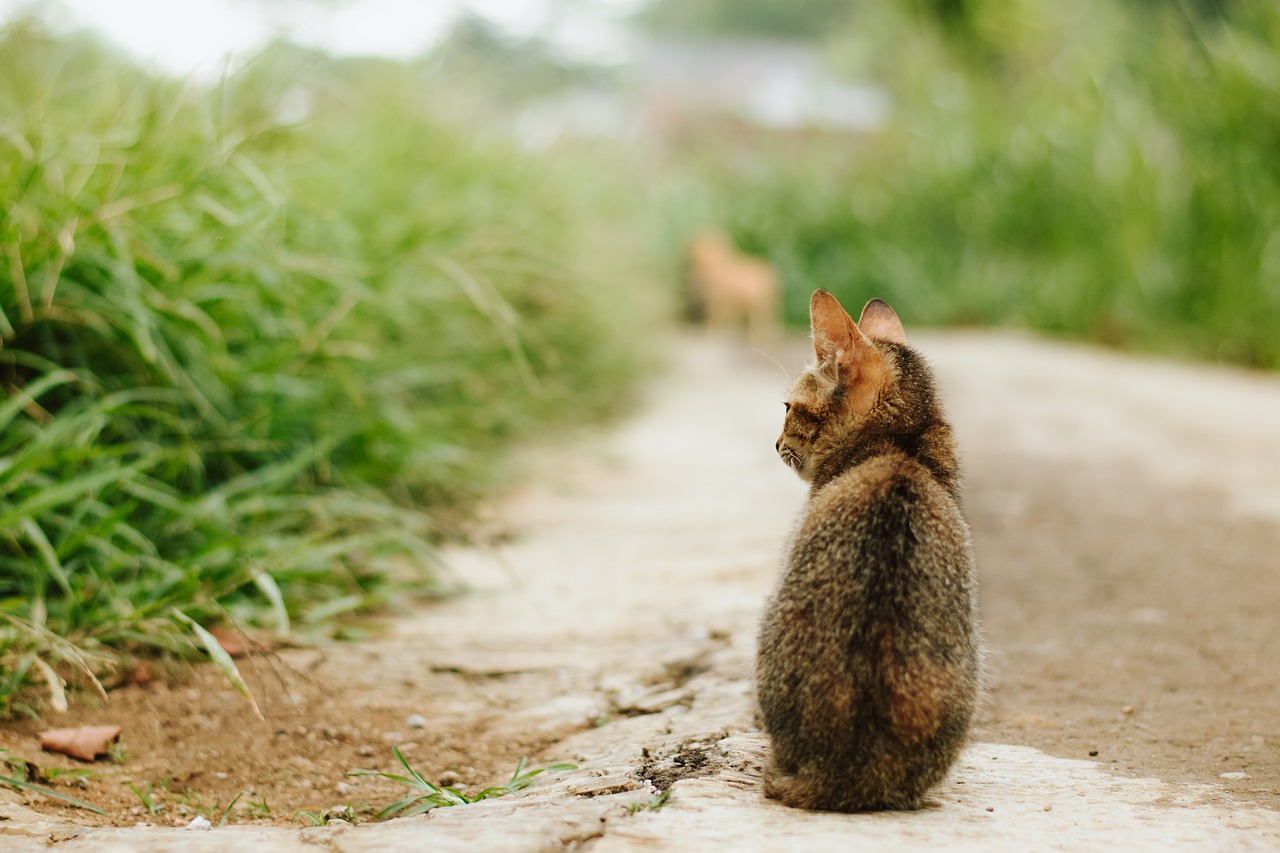
Bengal cats are not just pets; they are companions that express their love and affection in unique and delightful ways. Their playful antics and endearing habits can melt anyone's heart. One of the most charming aspects of Bengal cats is how they show affection, which can range from gentle head bumps to enthusiastic purring. These behaviors create a strong bond between the cat and its owner, making it clear that Bengal cats are not just independent creatures but also social beings who thrive on interaction.
One of the most common ways Bengal cats demonstrate their affection is through physical touch. They often seek out their owners for cuddles and will curl up next to them, purring softly as they do. This is not just a sign of comfort; it’s their way of saying, “I love being near you!” Additionally, Bengal cats are known to follow their owners around the house, a behavior that showcases their desire for companionship. They are curious creatures, and their inquisitive nature often leads them to explore every nook and cranny alongside their human friends.
Moreover, Bengal cats are playful by nature, and this playfulness is a significant aspect of their affectionate behaviors. Engaging in playtime can lead to some of the most heartwarming moments between a Bengal and its owner. Whether it’s chasing after a feather toy or pouncing on a laser dot, these activities not only provide physical exercise but also foster a deeper emotional connection. The joy they exhibit during playtime is contagious, and it’s a wonderful way for owners to bond with their furry friends. Here are some common affectionate behaviors exhibited by Bengal cats:
- Cuddling: Bengals often seek warmth and comfort by snuggling up to their owners.
- Purring: A soft, rumbling purr signals contentment and affection.
- Head Butting: This behavior is a sign of affection and trust.
- Following You: Bengals love to be around their people, often trailing behind them.
Another fascinating aspect of Bengal cats is their vocalization. They have a unique way of communicating their feelings through a variety of sounds, including chirps, trills, and gentle meows. This vocal communication can be a way for them to express their needs or simply to engage their owners in conversation. When your Bengal cat looks at you and lets out a soft trill, it’s their way of saying, “Hey, I’m here! Let’s play or cuddle!” Understanding these vocal cues can significantly enhance the affectionate bond between a cat and its owner.
Bengal cats also exhibit affection through grooming behaviors. You might notice your Bengal cat licking your hand or even your face. This grooming behavior is a sign of affection and trust, as cats often groom their companions to strengthen their social bonds. It’s their way of saying, “You’re part of my family!” This behavior can be incredibly heartwarming and is a testament to the deep connection they feel with their human counterparts.
In summary, Bengal cats have a plethora of affectionate behaviors that make them stand out as loving companions. Their playful nature, combined with their unique ways of expressing love, creates a bond that is both deep and fulfilling. Whether it’s through cuddling, playful antics, or vocal communication, Bengal cats are sure to capture the hearts of their owners, proving that they are more than just pets—they are family.
Q: Are Bengal cats good companions for families?
A: Yes, Bengal cats are known for their playful and affectionate nature, making them great companions for families. They thrive on interaction and love to be involved in family activities.
Q: How can I encourage affectionate behavior in my Bengal cat?
A: Engaging in regular playtime, providing a comfortable environment, and spending quality time together can encourage affectionate behaviors in your Bengal cat.
Q: Do Bengal cats get along with other pets?
A: Generally, Bengal cats are social and can get along well with other pets, including dogs and other cats, especially if they are introduced properly.
Bengal cats are not just pets; they are lively companions that thrive on human interaction. Unlike many other breeds that may be content with solitary time, Bengals have an innate need for companionship. This affectionate nature stems from their origins, as they were bred from domestic cats and the Asian leopard cat, creating a unique mix of wild and domestic traits. As a result, they possess a playful and inquisitive spirit that draws them closer to their human families.
One of the most remarkable aspects of Bengal cats is their ability to form strong bonds with their owners. They are known to follow their humans around the house, always eager to be involved in daily activities. Whether you're cooking in the kitchen or lounging on the couch, you can expect your Bengal to be right there with you, often seeking attention and affection. This behavior is not just a quirk; it’s a testament to their sociable personality.
Engagement is key to a Bengal's happiness. They are social creatures that require interaction, and this can come in various forms. For instance, playtime is not just a way to expend energy; it’s a vital part of their socialization. When you toss a toy or engage in a game of chase, you're not only providing exercise but also reinforcing your bond. This playful interaction helps them feel loved and connected, which is essential for their emotional well-being.
Moreover, Bengal cats are known for their unique communication styles. They often vocalize their needs and desires, using a range of sounds from chirps to purrs. Understanding these vocalizations is crucial for fostering a deeper connection with your feline friend. When a Bengal meows or chirps at you, it's their way of saying, "Hey, I want to play!" or "Let’s cuddle!" Recognizing these cues can enhance your relationship, making your Bengal feel heard and cherished.
In addition to their vocal communication, Bengals express affection through body language. For example, a Bengal that approaches you with a relaxed posture, tail held high, is showing trust and affection. Conversely, if they flatten their ears or swat at you playfully, they might be feeling overstimulated or just want to engage in a spirited play session. Being attuned to these signals allows you to respond appropriately, creating a harmonious environment that nurtures their affectionate nature.
Ultimately, the socialization of Bengal cats is a two-way street. They need your attention and affection, but they also offer immense joy and companionship in return. By investing time in understanding and interacting with your Bengal, you cultivate a relationship that is both rewarding and fulfilling. So, if you're considering welcoming a Bengal into your home, be prepared for a lively, affectionate companion that will undoubtedly enrich your life.
When it comes to Bengal cats, their playful nature is not just a quirky trait; it's a vital part of how they bond with their human companions. Imagine a lively dance between you and your furry friend, where each leap and pounce is a step towards a deeper connection. Bengals are known for their energetic antics, and this playfulness serves as a bridge that strengthens the bond between them and their owners. Engaging in play isn't just about fun—it's about building trust, understanding, and affection.
Consider this: when you toss a feather toy across the room, your Bengal cat's eyes light up with excitement. Their instinctual hunting behavior kicks in, and suddenly, it’s not just a toy anymore; it’s a thrilling chase! This interaction mimics their natural instincts and provides an outlet for their energy, but it also creates a shared experience that enhances your relationship. Through these playful moments, you communicate love and attention, reinforcing the idea that you’re a team.
Moreover, the act of play allows for a unique form of communication. Bengals are incredibly intelligent and perceptive. They learn to recognize your cues and respond to your moods. When you engage in play, you’re not just entertaining them; you’re also teaching them about your own emotions. A gentle toss of a ball can signify a relaxed, happy mood, while a more vigorous game can reflect your excitement. This back-and-forth creates a dynamic where both you and your Bengal cat feel attuned to one another’s feelings.
To maximize the bonding experience during playtime, consider incorporating a variety of activities. Here are some ideas:
- Interactive toys that mimic prey, such as laser pointers or feather wands, can stimulate their hunting instincts.
- Hide-and-seek games can encourage your cat to explore and engage with their environment.
- Puzzle toys that dispense treats can challenge their minds while rewarding them for their efforts.
Each of these activities not only entertains your Bengal but also fosters a sense of teamwork and partnership. The more you play together, the more your Bengal cat will associate you with fun and happiness, deepening the affectionate bond you share.
In conclusion, playfulness is far more than just a pastime for Bengal cats; it’s a powerful tool for bonding. By investing time in playful interactions, you’re not just keeping your cat entertained; you’re nurturing a loving relationship that can last a lifetime. So, grab that feather toy and let the fun begin—your Bengal is waiting to leap into action!
Q: How often should I play with my Bengal cat?
A: Ideally, you should play with your Bengal cat for at least 20-30 minutes a day. They have high energy levels and require regular stimulation to stay happy and healthy.
Q: What types of toys do Bengals prefer?
A: Bengals enjoy toys that mimic their natural hunting instincts, such as feather wands, laser pointers, and interactive puzzle toys that dispense treats.
Q: Can I play with my Bengal cat too much?
A: While play is essential, it's important to monitor your cat's behavior. If they show signs of overstimulation or fatigue, it's best to take a break.
Q: How can I encourage my Bengal cat to play?
A: Try engaging them with various toys, rotate them regularly to keep things fresh, and participate actively in the play to spark their interest.
Understanding how Bengal cats communicate is essential for fostering affection and building a strong bond with your furry friend. These cats are not just beautiful; they are also incredibly expressive creatures. They use a variety of vocalizations and body language to convey their feelings, needs, and desires. Have you ever noticed how your Bengal cat seems to have a different meow for every situation? It's almost as if they're trying to have a conversation with you!
Bengal cats are known for their distinctive vocalizations. Unlike many other cat breeds, they tend to be more vocal and can make a range of sounds, from soft chirps to loud yowls. A gentle trill or purr often indicates that your cat is happy and content, while a more intense yowl might mean they need your attention or are feeling a bit anxious. It's fascinating how they can communicate their emotions so clearly, isn't it?
Body language is another crucial aspect of a Bengal cat's communication style. For instance, when your cat approaches you with a relaxed posture, tail held high, and ears forward, it's a clear sign of affection and trust. On the other hand, if their tail is puffed up and ears are flattened, they may be feeling threatened or scared. Understanding these signals can help you respond appropriately to your cat's needs, creating a deeper bond between you two.
Here are some common vocalizations and their meanings:
| Vocalization | Meaning |
|---|---|
| Chirping | Excitement or playfulness |
| Purring | Contentment and relaxation |
| Yowling | Attention-seeking or discomfort |
| Trilling | Affection or greeting |
Additionally, Bengal cats often use their paws to communicate. They may gently tap you with their paw to get your attention or even knead you as a sign of affection. This kneading behavior, reminiscent of kittenhood, is a way for them to express comfort and love, reminding them of the nurturing they received as young ones. Isn’t it heartwarming to think that your Bengal cat sees you as a source of comfort?
In summary, paying attention to your Bengal cat's vocalizations and body language can greatly enhance your understanding of their emotional state. By interpreting their communication styles effectively, you can respond in ways that reinforce your bond, making your relationship even more affectionate and fulfilling.
- How can I tell if my Bengal cat is happy? Look for signs like purring, a relaxed posture, and playful behavior. If they seek your company and engage in play, they are likely happy!
- What should I do if my Bengal cat is yowling a lot? Yowling can indicate a need for attention or discomfort. Ensure they are not in pain and spend some quality time with them to see if that helps.
- Do Bengal cats get along with other pets? Yes, they can be very social and affectionate towards other pets, especially if introduced properly and given time to adjust.
Bengal cats are not just affectionate towards their human companions; they also exhibit a remarkable ability to bond with other pets. If you have a dog or another cat at home, you might be curious about how your Bengal will interact with them. The truth is, Bengals are known for their playful and social nature, which makes them quite adaptable to living with other animals. They often approach new friends with a sense of curiosity and enthusiasm, which can lead to delightful interactions.
When introducing a Bengal cat to other pets, it’s essential to consider their unique personality traits. Bengals are energetic and love to play, so they often engage in playful antics that can be entertaining for both themselves and their companions. For instance, a Bengal may initiate a game of chase with a dog or engage in a playful wrestling match with another cat. This playful behavior not only helps to establish a bond but also promotes a healthy lifestyle for all pets involved.
However, it's important to note that not all pets will react the same way to a Bengal's exuberance. Some dogs might feel overwhelmed or intimidated, while other cats may be more receptive. Therefore, gradual introductions and careful observation of their interactions are crucial. Here are a few tips to ensure a harmonious relationship:
- Supervised Introductions: Always supervise initial meetings to prevent any potential scuffles.
- Safe Spaces: Provide each pet with their own space to retreat to if they feel uncomfortable.
- Positive Reinforcement: Reward good behavior with treats and praise to encourage friendly interactions.
Interestingly, Bengal cats often develop unique friendships with other pets. They can be quite affectionate, often grooming their companions or cuddling up next to them during nap time. This behavior fosters a sense of security and comfort, making the home environment feel more cohesive. In multi-pet households, Bengals can serve as a bridge, helping to socialize other pets and create a lively atmosphere filled with warmth and affection.
In conclusion, the interactions between Bengal cats and other pets can be a source of joy and companionship. Their natural curiosity and playful demeanor often lead to heartwarming relationships, making them a wonderful addition to any household with multiple pets. As long as you take the time to facilitate positive interactions, your Bengal cat can thrive in a loving, multi-pet environment.
Q: Can Bengal cats get along with dogs?
A: Yes, Bengal cats can get along well with dogs, especially if they are introduced properly and allowed to build their relationship gradually.
Q: Do Bengal cats play well with other cats?
A: Bengals are generally playful and social, so they often enjoy the company of other cats. However, each cat's personality will determine the success of their interactions.
Q: How can I help my Bengal cat bond with other pets?
A: Supervised introductions, providing safe spaces, and engaging in playtime together can help strengthen the bond between your Bengal and other pets.
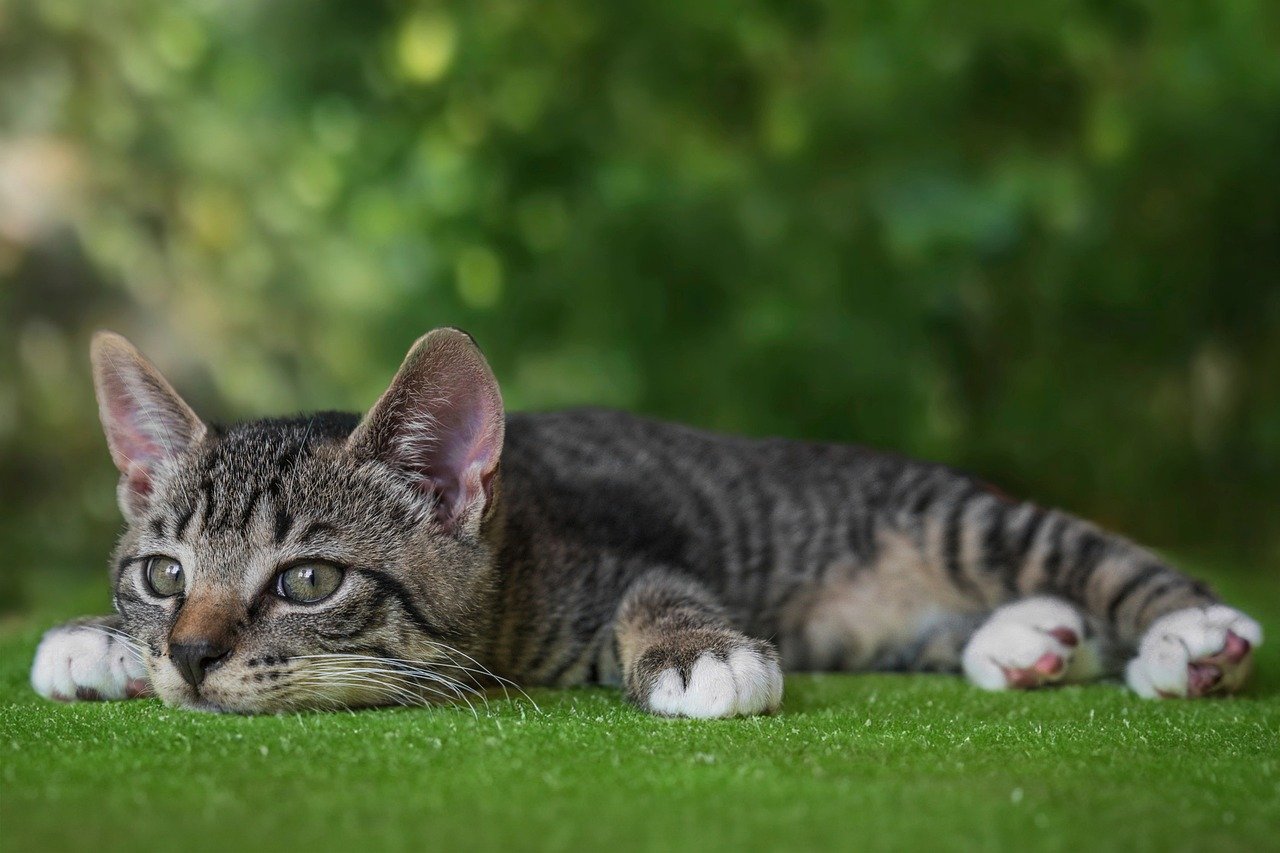
Creating a loving environment for your Bengal cat is not just about providing food and shelter; it’s about fostering a space that encourages affection, play, and comfort. Think of your home as a sanctuary where your Bengal can thrive, much like a garden where every plant needs the right amount of sunlight and water to flourish. Here are some essential elements to consider when setting up a loving atmosphere for your feline friend:
First and foremost, space is key. Bengal cats are known for their energetic and playful nature, so ensuring they have enough room to roam and explore is crucial. Consider setting up vertical spaces, such as cat trees or shelves, where your Bengal can climb and observe their surroundings. This not only satisfies their curiosity but also provides them with a sense of security, as they can retreat to higher ground when they need a break.
Another important aspect is the quality of interaction you provide. Bengals thrive on socialization and need regular engagement with their human companions. Make time each day to interact with your cat through play or cuddling. This could be as simple as tossing a feather toy or engaging in a game of hide and seek. The more you engage, the more your bond strengthens, creating a loving and affectionate relationship.
Additionally, consider the environmental enrichment you provide. Bengals are intelligent creatures that require mental stimulation to stay happy and healthy. Incorporate various toys, scratching posts, and interactive games into their daily routine. You might even set up a cozy nook with a window perch where they can watch birds and squirrels outside, satisfying their natural hunting instincts while keeping them entertained.
To further enhance their environment, ensure that their living area is comfortable and safe. Provide cozy bedding in a quiet spot, away from household hustle and bustle. This gives your Bengal a peaceful retreat where they can relax and recharge. Additionally, make sure that any potentially harmful items, like toxic plants or small objects they could swallow, are out of reach. Your cat’s safety is paramount in creating a loving space.
Lastly, establishing a consistent routine can significantly impact your Bengal's affectionate nature. Cats are creatures of habit, and having a predictable schedule for feeding, playtime, and cuddling can help them feel secure and loved. A routine not only builds trust but also enhances your relationship, making your Bengal more likely to express their affection towards you.
In summary, creating a loving environment for your Bengal cat involves a mixture of physical space, social interaction, mental stimulation, comfort, and routine. By paying attention to these aspects, you can cultivate a nurturing atmosphere where your Bengal can flourish and express their affectionate nature freely.
- What is the best way to bond with my Bengal cat? Regular playtime, cuddling, and engaging in interactive activities are great ways to strengthen your bond.
- Do Bengal cats require a lot of attention? Yes, Bengals are very social and thrive on interaction with their owners.
- How can I make my home more stimulating for my Bengal? Provide climbing structures, toys, and interactive games that challenge their intelligence.
- Is it okay to leave my Bengal cat alone for long periods? While they can be independent, Bengals prefer companionship and may become bored or anxious if left alone for too long.
Engaging your Bengal cat in enrichment activities is not just a way to keep them entertained; it's a vital part of nurturing their affectionate nature. These cats are incredibly intelligent and energetic, which means they thrive on stimulation that challenges their minds and bodies. Think of it as giving your cat a workout for the brain and a chance to bond with you at the same time! Just like how we enjoy a good game or a puzzle, Bengals love activities that engage them physically and mentally.
One of the most effective ways to enrich your Bengal's life is through interactive play. This can include using feather wands, laser pointers, or even engaging in a game of fetch. Imagine your Bengal darting across the room, leaping into the air to catch a feather—it's not just play; it's a bonding experience! You can also create a treasure hunt by hiding treats around the house. This not only stimulates their hunting instincts but also encourages them to explore their environment.
Additionally, consider incorporating puzzle toys into their routine. These toys require your cat to solve a problem to access a treat, which can keep them entertained for hours. Not only do they provide mental stimulation, but they also encourage your Bengal to work for their rewards, mimicking their natural hunting behavior. It's like turning your living room into a mini jungle gym!
Another enriching activity is to create a cozy window perch where your Bengal can watch the world go by. Cats are natural observers, and providing them with a spot to watch birds, squirrels, and the hustle and bustle outside can keep them entertained and mentally stimulated. This simple addition to your home can be a game-changer for your cat's happiness.
To ensure you’re catering to your Bengal’s unique personality, try varying the activities regularly. Just like us, they can get bored with the same routine, so mix it up! Rotate toys, change the location of their perch, or introduce new games. This not only keeps their environment fresh but also strengthens the bond you share as you both discover new ways to play together.
In summary, enriching your Bengal cat's life with a variety of activities is essential for their well-being and affectionate behavior. By engaging them in play, providing stimulating toys, and creating an interesting environment, you’re not just keeping them entertained; you’re fostering a deep, loving connection that will last a lifetime.
- What are some examples of enrichment activities for Bengal cats? Engaging in interactive play, using puzzle toys, and providing a window perch are great options.
- How often should I engage my Bengal in enrichment activities? Aim for at least 30 minutes of interactive play each day, but feel free to incorporate more as they love to stay active!
- Can enrichment activities help reduce behavioral issues? Yes, providing mental and physical stimulation can help alleviate boredom and reduce unwanted behaviors.
Establishing a routine for your Bengal cat is not just a good idea; it's a vital part of nurturing their affectionate nature. Just like humans, cats thrive on predictability and structure. Imagine waking up every day not knowing what to expect; it would be chaotic, right? For Bengal cats, a consistent routine provides a sense of security and stability that fosters their loving behavior. When they know what to expect, they can relax and engage more fully with their human companions.
One of the key aspects of a routine is the timing of meals. Bengal cats are known for their energetic personalities, and regular feeding times can help manage their energy levels. By feeding your cat at the same time each day, you not only provide nourishment but also create a rhythm that they can anticipate. This predictability can lead to more affectionate behavior, as they learn to associate you with positive experiences. Think of it as a dance; when both partners know the steps, they can move together gracefully.
Playtime is another crucial component of a Bengal's daily routine. These cats are playful and inquisitive, and incorporating regular play sessions into their day helps channel their energy in a positive way. Engaging in interactive play not only stimulates their minds but also strengthens the bond between you and your feline friend. Imagine the joy of watching your Bengal leap and pounce, fully engaged in the moment. This kind of interaction is essential in reinforcing their affectionate nature.
Moreover, establishing a routine for grooming and cuddle time can significantly enhance your relationship. Bengal cats often enjoy being brushed, and this activity can be a wonderful way to bond. By integrating grooming into your daily schedule, you create an opportunity for intimate interaction. During these moments, you’ll find that your Bengal cat may become more relaxed and affectionate, purring contentedly as you brush their luxurious coat. It’s a beautiful reminder of the trust and love that develops through routine.
Finally, it’s essential to remember that every Bengal cat is unique. While some may thrive on a strict schedule, others might prefer a more flexible approach. Observing your cat’s behavior and adjusting your routine accordingly will help you cater to their individual needs. Ultimately, the goal is to create an environment where your Bengal feels secure and loved, allowing their affectionate nature to flourish.
- How often should I play with my Bengal cat? It's best to engage in play sessions at least once or twice a day to meet their high energy levels.
- What is the best way to establish a routine? Start by setting consistent feeding times, play sessions, and grooming activities, and stick to them as closely as possible.
- Can I adjust the routine if my Bengal cat seems bored? Absolutely! If your cat shows signs of boredom, feel free to mix things up and introduce new toys or activities.
- How do I know if my Bengal cat is happy with the routine? Look for signs of affection, such as purring, head-butting, and seeking your company during playtime.
Frequently Asked Questions
-
What makes Bengal cats so affectionate?
Bengal cats are known for their unique blend of playful energy and affectionate behavior. Their social nature drives them to seek out human companionship, making them incredibly loving pets. They often express their affection through cuddling, purring, and playful antics, which helps to strengthen the bond with their owners.
-
How can I encourage my Bengal cat to be more affectionate?
Encouraging affection in Bengal cats can be achieved through regular interaction and playtime. Engaging them in activities that stimulate their minds and bodies not only keeps them happy but also fosters a deeper connection. Establishing a routine for feeding, play, and cuddling can also help your cat feel secure and loved.
-
Do Bengal cats get along well with other pets?
Yes! Bengal cats are generally friendly and social, which allows them to interact well with other pets, including dogs and other cats. Their playful and curious nature can lead to affectionate relationships with fellow pets, creating a harmonious multi-pet household.
-
What are some signs that my Bengal cat loves me?
There are several signs that indicate your Bengal cat loves you, such as following you around the house, purring when near you, kneading with their paws, and bringing you 'gifts' like toys or even the occasional caught prey. They may also seek out your lap for a cozy cuddle session, which is a clear indication of their affection.
-
How important is socialization for Bengal cats?
Socialization is crucial for Bengal cats as it helps them develop their affectionate traits. The more they interact with humans and other pets, the more comfortable and loving they become. Early socialization can lead to a well-adjusted cat that thrives on companionship and displays a wide range of affectionate behaviors.
-
Can playtime enhance the bond with my Bengal cat?
Absolutely! Playtime is not just a fun activity; it's a vital bonding tool. Engaging in play helps your Bengal cat expend energy and stimulates their natural hunting instincts. This shared experience fosters a deeper connection, making your cat feel loved and secure in your presence.
-
What kind of environment is best for a Bengal cat?
A loving and stimulating environment is essential for a Bengal cat's well-being. Providing plenty of toys, climbing structures, and safe spaces to explore can encourage their playful nature. Additionally, creating a consistent routine for feeding and playtime helps establish a sense of security, which is vital for nurturing their affectionate behavior.



